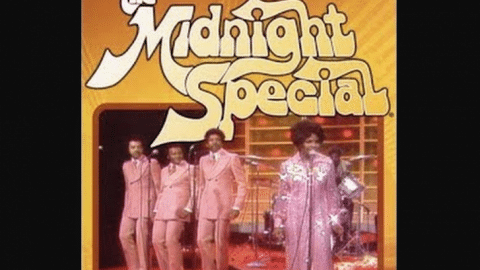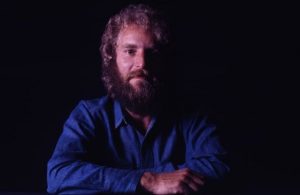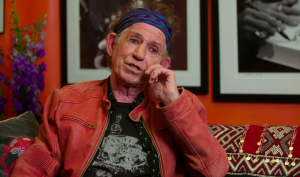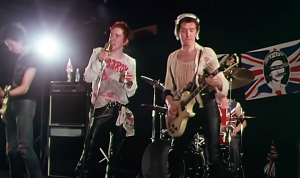A Look Back At USA Rock n’ Roll In The 1970s’

via @The Midnight Special - Topic | YouTube
The 1970s were a defining era for rock ‘n’ roll in the United States. It was a time when the genre truly came into its own, with groundbreaking music and unforgettable performances shaping the decade. Rock wasn’t just music—it was a lifestyle.
This period saw the rise of legendary bands and artists who continue to influence the music world today. Their creativity pushed boundaries, blending different styles to create something entirely new. From raw guitar riffs to poetic lyrics, rock ‘n’ roll in the ’70s had it all.
Looking back at this iconic decade, it’s clear why the ’70s are often celebrated as rock’s golden age. The energy, rebellion, and sheer talent that defined the music continue to resonate. Let’s dive into the era that changed everything.
Don McLean’s First Hit, American Pie
Don McLean’s first major hit, American Pie, became an instant classic after it was recorded on May 26, 1971. The song quickly climbed to number one on the charts, capturing the hearts of listeners with its poetic lyrics and haunting melody. It wasn’t just a song—it was a cultural phenomenon.
The success catapulted McLean into stardom, making him a household name during the early 1970s. While the song’s legacy continued through countless reissues, McLean’s peak during that era remained unmatched. American Pie became a symbol of an unforgettable musical moment in history.
Duane Allman’s Death
Duane Allman’s untimely death in 1971 shocked the music world. The 24-year-old guitarist, known for his work with the Allman Brothers Band, tragically lost his life in Macon, Georgia, when his motorcycle collided with a truck. His passing marked the end of a short but extraordinary career that left an indelible mark on rock music.
Just before his death, Allman had contributed to one of rock’s most iconic tracks, “Layla,” alongside Eric Clapton. His masterful slide guitar on the song showcased his immense talent and cemented his legacy. Despite his brief life, Duane Allman’s influence continues to resonate in rock history.
The KISS Formation
KISS came to life in the early 1970s when Gene Simmons and Paul Stanley found drummer Peter Criss and guitarist Ace Frehley through a newspaper ad. The group quickly united over their shared vision of creating something bold and theatrical, combining music with an unforgettable stage presence.
Inspired by the glam rock movement, they embraced towering platform boots, flashy outfits, and striking makeup. This iconic look not only set them apart but also allowed them to maintain a sense of mystery, as their true identities remained hidden behind their larger-than-life personas.
Smokey Robinson’s Final Performance with the Miracles
Smokey Robinson gave his final performance with the Miracles at the Carter Barron Amphitheater in Washington, D.C., marking the end of an era. After 13 remarkable years, Robinson stepped away from the group he co-founded, leaving behind a legacy of 42 Top 100 hits that helped define the Motown sound.
His departure wasn’t just the end of his time with the Miracles—it was the beginning of a new chapter. Robinson pursued a solo career that further showcased his talent as a singer, songwriter, and producer, solidifying his place as one of music’s all-time greats.
The Midnight Special
The Midnight Special made its debut on NBC, bringing live rock music performances into living rooms across America. Airing every Friday night, the 90-minute show stood out for its raw, unedited performances, giving viewers a front-row seat to their favorite artists.
Hosted by the charismatic Wolfman Jack, the show ran for over eight years, featuring legendary acts that defined the rock era. From rising stars to established icons, The Midnight Special became a cultural staple, celebrating the vibrant energy of live music.
Jim Croce’s First Hit
Jim Croce’s breakthrough came with “Bad, Bad Leroy Brown,” a song that soared to the No. 1 spot on the Billboard pop singles chart. The catchy tune, with its clever lyrics and upbeat rhythm, quickly became a fan favorite and showcased Croce’s storytelling talent.
This chart-topping hit marked a turning point in his career, solidifying his place in the music industry. Sadly, his time in the spotlight was short-lived, but songs like “Bad, Bad Leroy Brown” continue to keep his legacy alive.
California Jam Rock Festival
The iconic California Jam rock festival drew over 200,000 fans to the Ontario Speedway, creating a historic moment in 1970s music. This massive event was a celebration of rock, featuring unforgettable performances and a lineup of legendary acts that defined the decade.
Artists like Deep Purple, Emerson, Lake & Palmer, Black Sabbath, and the Eagles lit up the stage, alongside Seals & Crofts and Earth, Wind & Fire. The festival became a milestone for live music, blending hard rock, progressive sounds, and soulful grooves into one unforgettable day.
The Government’s Great Move
In a pivotal move during the 1970s, the U.S. government required all new car radios to support both AM and FM frequencies. This decision ensured that drivers could access a wider range of stations, especially those dedicated to the growing popularity of rock music on FM.
FM radio offered better sound quality, which was perfect for the vibrant and dynamic rock tunes of the era. By mandating this change, the government not only modernized in-car entertainment but also helped solidify FM radio as the go-to platform for music lovers across the nation.
Elvis Presley’s Death
Elvis Presley’s death on August 16, 1977, sent shockwaves across the globe. At just 42 years old, the King of Rock ‘n’ Roll left behind a legacy that forever changed music history. News of his passing brought an outpouring of grief, with fans scrambling for information as phone lines in Memphis were overwhelmed.
Thousands of heartbroken admirers gathered outside his Graceland mansion to pay their respects. Florists in the city quickly ran out of flowers, highlighting the massive impact Elvis had on his followers. His death marked the end of an era, but his music and influence remain timeless.
The Lynyrd Skynyrd Tragedy
In 1977, Lynyrd Skynyrd was at the height of their success, having released iconic tracks like “Sweet Home Alabama” and “Free Bird.” On October 17, they unveiled their fifth album, Street Survivors, featuring a fiery cover with the band standing amid flames. Tragically, this album would become a haunting symbol of loss and the end of their golden era.
Just days after its release, a devastating plane crash claimed the lives of lead singer Ronnie Van Zant, guitarist Steve Gaines, and backup singer Cassie Gaines, among others. The tragedy marked Street Survivors as a cursed album and abruptly ended the group’s classic lineup, leaving a lasting shadow over their legacy.











